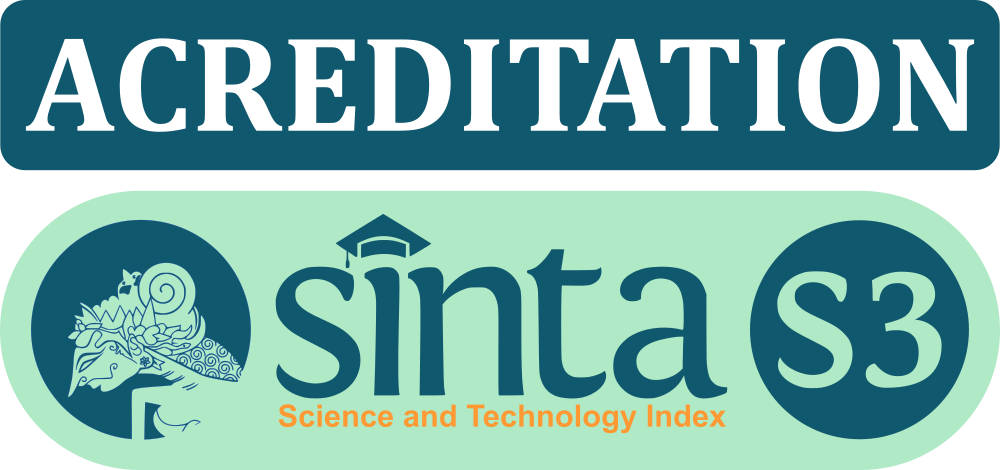Modeling Indonesian Motor Vehicle Tax Coefficients Based on Machine Learning Emission Data
DOI:
https://doi.org/10.55981/mipi.2023.1734Keywords:
carbon monoxide, Coefficient tax, hydrocarbons, machine learning, neural network, nitrogen oxides, orange data mining, vehicle emissionAbstract
This study utilized machine learning-based modeling to predict motor vehicle tax coefficients in Indonesia based on vehicle emission data. Three machine learning algorithms, namely Random Forest (RF), AdaBoost (AB), and Neural Network (NN), were employed to develop regression models for the tax coefficients. The research process involved data pre-processing, exploratory data analysis, feature ranking, and regression modeling. Model evaluation was performed using metrics such as Mean Square Error (MSE), Root Mean Square Error (RMSE), Mean Absolute Error (MAE), and Coefficient of Determination (R2). The findings revealed that all three algorithms produced tax coefficient models for diesel vehicles with R2 values approaching 1. Among them, NN achieved the highest R2 value of 0.987, followed by RF with 0.986 and AB with 0.985. NN also performed the best in terms of MSE (0.023), RMSE (0.152), but MAE (0.076) achieved by RF for diesel vehicles. For gasoline vehicles, the NN algorithm yielded an R2 value of 0.970, while RF and AB algorithms resulted in R2 values of 0.969 and 0.946, respectively. NN also obtained the best MSE (0.086), RMSE (0.293), and MAE (0.122) values achieved by RF for gasoline vehicles. These results indicate that the tax coefficient models developed using RF, AB, and ANN algorithms effectively fit the measurement data. These models can support policymakers in formulating taxation regulations based on emission levels and vehicle fuel types, encouraging the adoption of environmentally friendly vehicles. Furthermore, they have the potential to reduce vehicle emissions and improve air quality through more effective taxation regulations
References
M. A. Rizaldi, R. Azizah, M. T. Latif, L. Sulistyorini, and B. P. Salindra, “Literature Review: Dampak Paparan Gas Karbon Monoksida Terhadap Kesehatan Masyarakat yang Rentan dan Berisiko Tinggi,” J. Kesehat. Lingkung. Indones., vol. 21, no. 3, pp. 253–265, 2022, doi: 10.14710/jkli.21.3.253-265.
M. Ince and O. K. Ince, “Introductory Chapter: Sources, Health Impact, and Environment Effect of Hydrocarbons,” M. Ince and O. K. Ince, Eds. Rijeka: IntechOpen, 2019, p. Ch. 1. doi: 10.5772/intechopen.89039.
W. de Vries, “Impacts of nitrogen emissions on ecosystems and human health: A mini review,” Curr. Opin. Environ. Sci. Heal., vol. 21, no. x, p. 100249, 2021, doi: 10.1016/j.coesh.2021.100249.
S. Shaw and B. Van Heyst, “Nitrogen Oxide (NOx) emissions as an indicator for sustainability,” Environ. Sustain. Indic., vol. 15, no. x, p. 100188, 2022, doi: 10.1016/j.indic.2022.100188.
K. H. Kim, E. Kabir, and S. Kabir, “A review on the human health impact of airborne particulate matter,” Environ. Int., vol. 74, pp. 136–143, Jan. 2015, doi: 10.1016/J.ENVINT.2014.10.005.
R. B. Hamanaka and G. M. Mutlu, “Particulate Matter Air Pollution: Effects on the Cardiovascular System,” Front. Endocrinol. (Lausanne)., vol. 9, no. November, pp. 1–15, 2018, doi: 10.3389/fendo.2018.00680.
A. S. Chadha, Y. Shinde, N. Sharma, and P. K. De, “Predicting CO2 Emissions by Vehicles Using Machine Learning BT - Data Management, Analytics and Innovation,” 2023, pp. 197–207. doi: https://doi.org/10.1007/978-981-19-2600-6_14.
N. Ma, W. Y. Shum, T. Han, and F. Lai, “Can Machine Learning be Applied to Carbon Emissions Analysis : An Application to the CO 2 Emissions Analysis Using Gaussian Process Regression,” vol. 9, no. September, pp. 1–8, 2021, doi: 10.3389/fenrg.2021.756311.
S. Shah, S. Thakar, K. Jain, B. Shah, and S. Dhage, “A Comparative Study of Machine Learning and Deep Learning Techniques for Prediction of CO2 Emission in Cars,” Lect. Notes Networks Syst., vol. 587, pp. 749–758, 2023, doi: 10.1007/978-981-19-7874-6_55/COVER.
S. Khurana, S. Saxena, S. Jain, and A. Dixit, “Materials Today : Proceedings Predictive modeling of engine emissions using machine learning : A review,” Mater. Today Proc., vol. 38, pp. 280–284, 2021, doi: 10.1016/j.matpr.2020.07.204.
I. Popchev and D. Orozova, “Algorithms for Machine Learning with Orange System,” Int. J. online Biomed. Eng., vol. 19, no. 4, pp. 109–123, 2023, doi: 10.3991/ijoe.v19i04.36897.
U. Thange, V. K. Shukla, R. Punhani, and ..., “Analyzing COVID-19 Dataset through Data Mining Tool ‘Orange,’” 2021 2nd Int. …, 2021, [Online]. Available: https://ieeexplore.ieee.org/abstract/document/9357754/
V. O’Riordan, F. Rogan, B. Ó’Gallachóir, and H. Daly, “Impact of an emissions-based car tax policy on CO2 emissions and tax revenue from private cars in Ireland,” Int. J. Sustain. Transp., vol. 0, no. 0, pp. 1–13, 2022, doi: 10.1080/15568318.2022.2132562.
Z. B. Demsar J, Curk T, Erjavec A, Gorup C, Hocevar T, Milutinovic M, Mozina M, Polajnar M, Toplak M, Staric A, Stajdohar M, Umek L, Zagar L, Zbontar J, Zitnik M, “Orange: Data Mining Toolbox in Python,” J. Mach. Learn. Res., vol. 14, p. 2349−2353, 2013, [Online]. Available: https://jmlr.org/papers/volume14/demsar13a/demsar13a.pdf
A. Ishak, K. Siregar, Asfriyati, R. Ginting, and M. Afif, “Orange Software Usage in Data Mining Classification Method on the Dataset Lenses,” IOP Conf. Ser. Mater. Sci. Eng., vol. 1003, no. 1, 2020, doi: 10.1088/1757-899X/1003/1/012113.
F. Hidiyanto, S. Leksono, Sigit Tri Atmaja, and R. Fajar, “Data Exploratory Analysis and Feature Selection of Low-Speed Wind Tunnel Data for Predicting Force and Moment of Aircraft,” Maj. Ilm. Pengkaj. Ind., vol. 16, no. 2, pp. 87–94, 2022, doi: 10.29122/mipi.v16i2.5285.
L. Irawan, L. H. Hasibuan, and F. Fauzi, “Analisa Prediksi Efek Kerusakan Gempa Dari Magnitudo (Skala Richter) Dengan Metode Algoritma Id3 Menggunakan Aplikasi Data Mining Orange,” J. Teknol. Inf. …, 2020, [Online]. Available: http://e-journal.upr.ac.id/index.php/JTI/article/view/1079
I. Indriyanti, N. Ichsan, H. Fatah, T. Wahyuni, and...,“IMPLEMENTASI ORANGE DATA MINING UNTUK PREDIKSI HARGA BITCOIN,” … Ris. Sains dan …, 2022, [Online]. Available: http://ejurnal.ars.ac.id/index.php/jti/article/view/762
Downloads
Published
How to Cite
Issue
Section
License

This work is licensed under a Creative Commons Attribution-ShareAlike 4.0 International License.
Open Access Policy
MIPI provides immediate open access to its content on the principle that making research freely available to the public supports a greater global exchange of knowledge.
MIPI by BRIN is licensed under a Creative Commons Attribution-NonCommercial-ShareAlike 4.0 International License. Permissions beyond the scope of this license may be available at http://ejurnal.bppt.go.id/index.php/MIPI


















